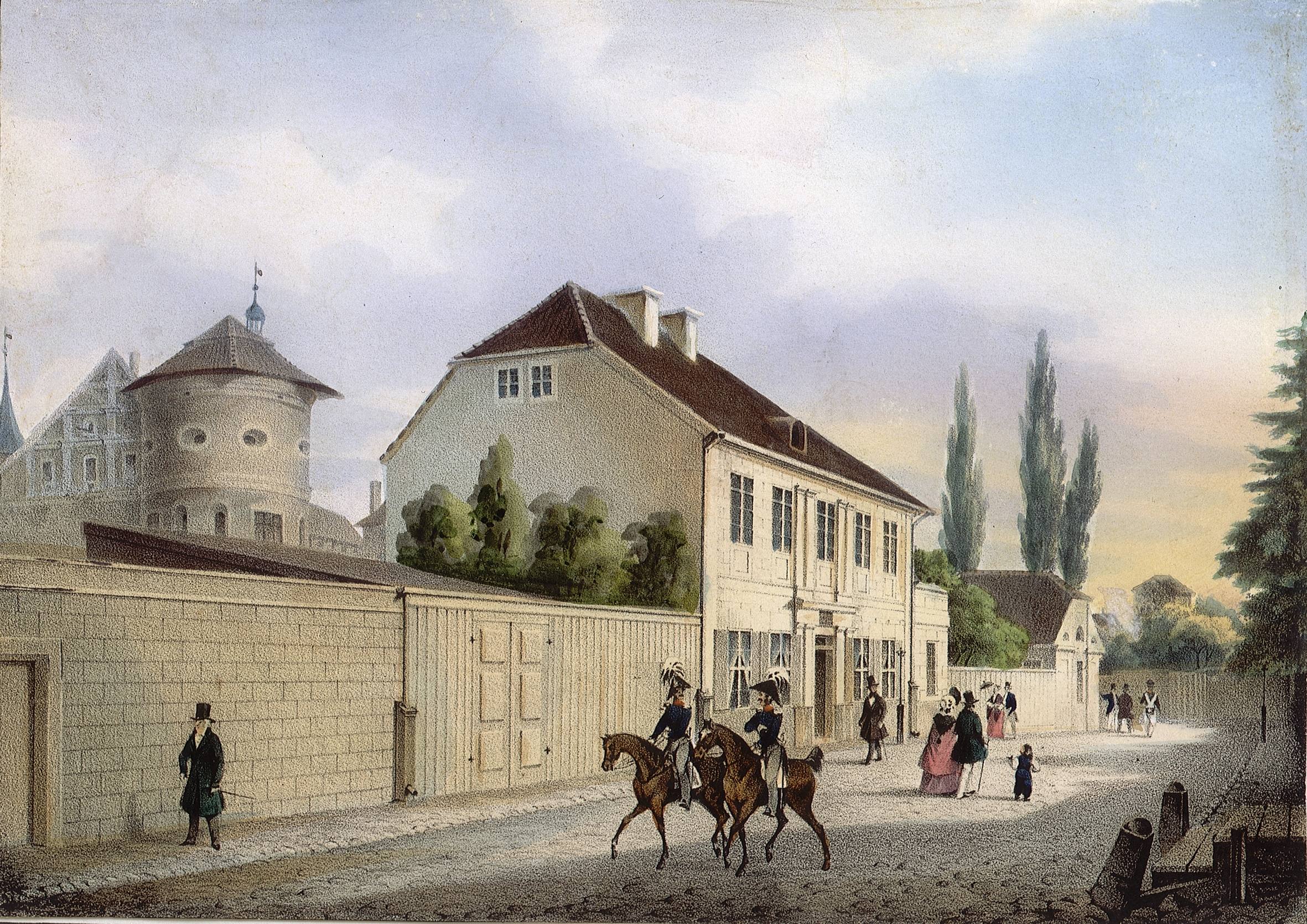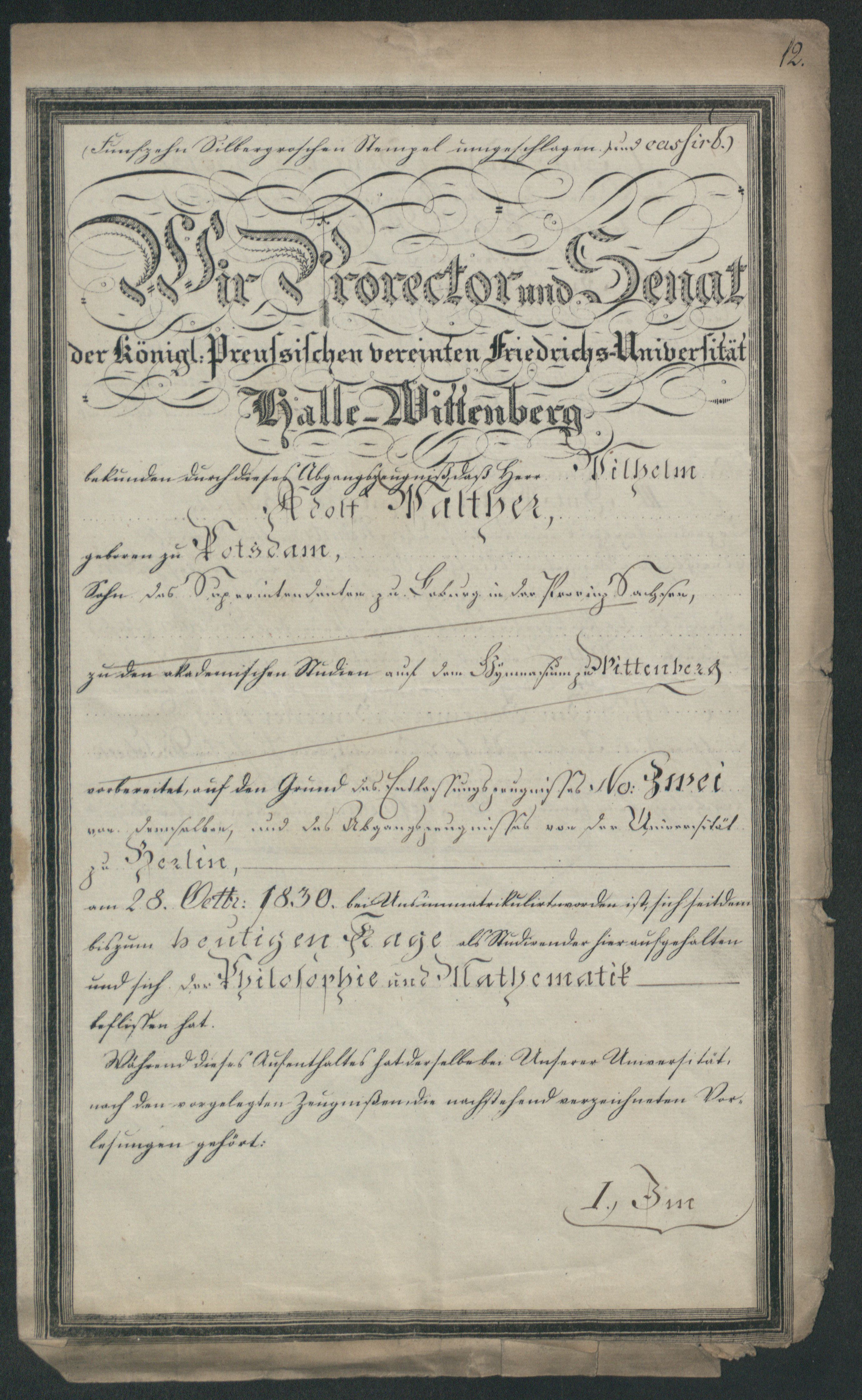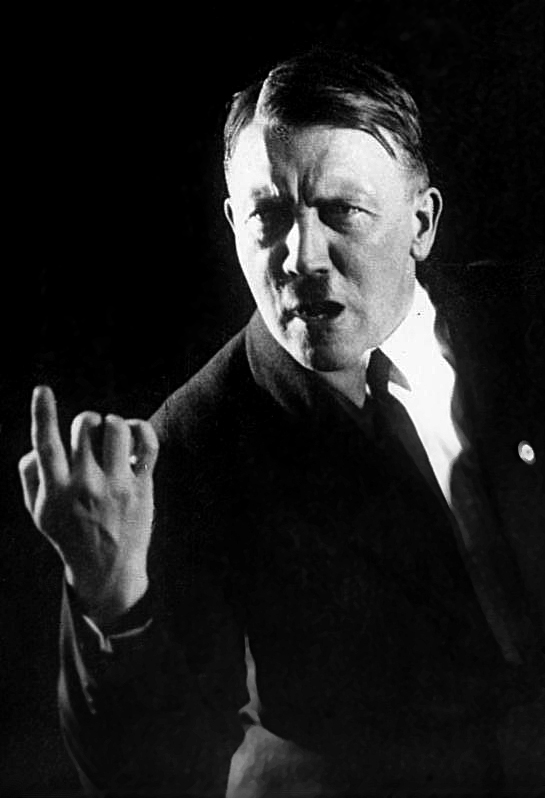|
Ziehen
Georg Theodor Ziehen (12 November 1862 – 29 December 1950) was a German neurologist and psychiatrist born in Frankfurt am Main. He was the son of noted author, Eduard Ziehen (1819–1884). Education and career As a gymnasium student, Ziehen studied the works of Immanuel Kant and Arthur Schopenhauer at Lessing-Gymnasium, Frankfurt, Lessing-Gymnasium in Frankfurt. Later he studied medicine in University of Würzburg, Würzburg and University of Berlin, Berlin, where he received his doctorate in 1885. While a medical student he studied the writings of David Hume, Spinoza, Plato and George Berkeley. Following graduation he worked as an assistant to Karl Ludwig Kahlbaum at the mental hospital in Görlitz, and in 1887 became an assistant to Otto Binswanger at the psychiatric clinic in University of Jena, Jena. At Jena one of his patients was philosopher Friedrich Nietzsche. Subsequently, Ziehen became a professor of psychiatry in Utrecht University, Utrecht (from 1900), University o ... [...More Info...] [...Related Items...] OR: [Wikipedia] [Google] [Baidu] |
Ziehen
Georg Theodor Ziehen (12 November 1862 – 29 December 1950) was a German neurologist and psychiatrist born in Frankfurt am Main. He was the son of noted author, Eduard Ziehen (1819–1884). Education and career As a gymnasium student, Ziehen studied the works of Immanuel Kant and Arthur Schopenhauer at Lessing-Gymnasium, Frankfurt, Lessing-Gymnasium in Frankfurt. Later he studied medicine in University of Würzburg, Würzburg and University of Berlin, Berlin, where he received his doctorate in 1885. While a medical student he studied the writings of David Hume, Spinoza, Plato and George Berkeley. Following graduation he worked as an assistant to Karl Ludwig Kahlbaum at the mental hospital in Görlitz, and in 1887 became an assistant to Otto Binswanger at the psychiatric clinic in University of Jena, Jena. At Jena one of his patients was philosopher Friedrich Nietzsche. Subsequently, Ziehen became a professor of psychiatry in Utrecht University, Utrecht (from 1900), University o ... [...More Info...] [...Related Items...] OR: [Wikipedia] [Google] [Baidu] |
Hermann Oppenheim
Hermann Oppenheim (1 January 1858 – 5 May 1919) was one of the leading neurologists in Germany. Life and work Oppenheim is the son of Juda Oppenheim (1824–1891), the long-time rabbi of the Warburg synagogue community , and his wife, Cäcilie, née Steeg (1822–1898). He studied medicine at the Universities of Berlin, Göttingen and Bonn. He started his career at the Charité-Hospital in Berlin as an assistant to Karl Westphal (1833–1890). In 1891 Oppenheim opened a successful private hospital in Berlin. In 1894, Oppenheim was the author of a textbook on nervous diseases titled ''Lehrbuch der Nervenkrankheiten für Ärzte und Studierende'', a book that soon became a standard in his profession. It was published in several editions and languages, and is considered one of the best textbooks on neurology ever written. He also published significant works on tabes dorsalis, alcoholism, anterior poliomyelitis, syphilis, multiple sclerosis and traumatic neurosis. In the field ... [...More Info...] [...Related Items...] OR: [Wikipedia] [Google] [Baidu] |
Otto Binswanger
Otto Ludwig Binswanger (; ; 14 October 1852 in Scherzingen, Münsterlingen – 15 July 1929 in Kreuzlingen) was a Swiss psychiatrist and neurologist who came from a famous family of physicians; his father was founder of the Kreuzlingen Sanatorium, and he was uncle to Ludwig Binswanger (1881–1966) who was a major figure in the existential psychology movement. He was brother-in-law to physiotherapist Heinrich Averbeck (1844–1889). Other notable family members include his son-in-law Hans-Constantin Paulssen (1892-1984), who was the first president of the BDA (Bundesvereinigung der Deutschen Arbeitgeberverbände) (Confederation of German Employers' Associations). Biography Otto studied medicine at Heidelberg, Strasbourg and Zurich, and beginning in 1877, worked under Ludwig Meyer (1827–1900) in the psychiatric clinic at the University of Göttingen. He was later associated with the pathological institute in Breslau, and in 1880 was appointed chief physician under Karl Fri ... [...More Info...] [...Related Items...] OR: [Wikipedia] [Google] [Baidu] |
Karl Von Bardeleben
Karl von Bardeleben (7 March 1849 – 19 December 1919) was a German anatomist born in Giessen. He was the son of surgeon Heinrich Adolf von Bardeleben (1819–1895). He received his education at the Universities of Greifswald, Heidelberg, Berlin and Leipzig. In 1874 he became a Privatdozent at the University of Jena, where he later served as an associate professor (from 1878) and full professor (from 1898). Bardeleben specialized in the fields of topographic and comparative anatomy. In 1886 Bardeleben was founder of the ''Anatomischer Anzeiger'' (Annals of Anatomy), a journal that is considered to be one of the better publications on anatomical morphology. The journal contains many original treatises on topographic and clinical anatomy, embryology, cell and tissue research, as well as microscopic and "submicroscopic" biology. In 1892 he published the collected anatomical writings of Johann Wolfgang von Goethe, titled "''Goethe als Anatom''". Other significant writings by B ... [...More Info...] [...Related Items...] OR: [Wikipedia] [Google] [Baidu] |
Immanuel Kant
Immanuel Kant (, , ; 22 April 1724 – 12 February 1804) was a German philosopher and one of the central Enlightenment thinkers. Born in Königsberg, Kant's comprehensive and systematic works in epistemology, metaphysics, ethics, and aesthetics have made him one of the most influential figures in modern Western philosophy. In his doctrine of transcendental idealism, Kant argued that space and time are mere "forms of intuition" which structure all experience, and therefore that, while " things-in-themselves" exist and contribute to experience, they are nonetheless distinct from the objects of experience. From this it follows that the objects of experience are mere "appearances", and that the nature of things as they are in themselves is unknowable to us. In an attempt to counter the skepticism he found in the writings of philosopher David Hume, he wrote the '' Critique of Pure Reason'' (1781/1787), one of his most well-known works. In it, he developed his theory of ... [...More Info...] [...Related Items...] OR: [Wikipedia] [Google] [Baidu] |
University Of Halle
Martin Luther University of Halle-Wittenberg (german: Martin-Luther-Universität Halle-Wittenberg), also referred to as MLU, is a public, research-oriented university in the cities of Halle and Wittenberg and the largest and oldest university in the German state of Saxony-Anhalt. MLU offers German and international (English) courses leading to academic degrees such as BA, BSc, MA, MSc, doctoral degrees, and Habilitation. The university was created in 1817 through the merger of the University of Wittenberg (founded in 1502) and the University of Halle (founded in 1694). MLU is named after Protestant reformer Martin Luther, who was a professor in Wittenberg. Today, the university campus is located in Halle, while ''Leucorea Foundation'' in Wittenberg serves as MLU's convention centre. Both Halle and Wittenberg are about one hour from Berlin via the Berlin–Halle railway, which offers Intercity-Express (ICE) trains. History University of Wittenberg (''Universität Wittenbe ... [...More Info...] [...Related Items...] OR: [Wikipedia] [Google] [Baidu] |
Who Named It
''Whonamedit?'' is an online English-language dictionary of medical eponyms and the people associated with their identification. Though it is a dictionary, many eponyms and persons are presented in extensive articles with comprehensive bibliographies. The dictionary is hosted in Norway and maintained by medical historian Ole Daniel Enersen Ole Daniel Enersen (born March 14, 1943, in Oslo, Norway) is a Norwegian climber, photographer, journalist, writer, and medical historian. In 1965 he made the first ascent of the Trollveggen mountain in Romsdalen, Norway, along with Leif Norman .... References External links * Medical websites Medical dictionaries Eponyms {{online-dict-stub ... [...More Info...] [...Related Items...] OR: [Wikipedia] [Google] [Baidu] |
Basal Ganglia
The basal ganglia (BG), or basal nuclei, are a group of subcortical nuclei, of varied origin, in the brains of vertebrates. In humans, and some primates, there are some differences, mainly in the division of the globus pallidus into an external and internal region, and in the division of the striatum. The basal ganglia are situated at the base of the forebrain and top of the midbrain. Basal ganglia are strongly interconnected with the cerebral cortex, thalamus, and brainstem, as well as several other brain areas. The basal ganglia are associated with a variety of functions, including control of voluntary motor movements, procedural learning, habit learning, conditional learning, eye movements, cognition, and emotion. The main components of the basal ganglia – as defined functionally – are the striatum, consisting of both the dorsal striatum (caudate nucleus and putamen) and the ventral striatum (nucleus accumbens and olfactory tubercle), the globus pallidus, ... [...More Info...] [...Related Items...] OR: [Wikipedia] [Google] [Baidu] |
Dystonia
Dystonia is a neurological hyperkinetic movement disorder in which sustained or repetitive muscle contractions result in twisting and repetitive movements or abnormal fixed postures. The movements may resemble a tremor. Dystonia is often intensified or exacerbated by physical activity, and symptoms may progress into adjacent muscles. The disorder may be hereditary or caused by other factors such as birth-related or other physical trauma, infection, poisoning (e.g., lead poisoning) or reaction to pharmaceutical drugs, particularly neuroleptics, or stress. Treatment must be highly customized to the needs of the individual and may include oral medications, chemodenervation botulinum neurotoxin injections, physical therapy, or other supportive therapies, and surgical procedures such as deep brain stimulation. Classification There are multiple types of dystonia, and many diseases and conditions may cause dystonia. Dystonia is classified by: # Clinical characteristics such as a ... [...More Info...] [...Related Items...] OR: [Wikipedia] [Google] [Baidu] |
Psychiatrist
A psychiatrist is a physician who specializes in psychiatry, the branch of medicine devoted to the diagnosis, prevention, study, and treatment of mental disorders. Psychiatrists are physicians and evaluate patients to determine whether their symptoms are the result of a physical illness, a combination of physical and mental ailments or strictly mental issues. Sometimes a psychiatrist works within a multi-disciplinary team, which may comprise Clinical psychology, clinical psychologists, Social work, social workers, Occupational therapist, occupational therapists, and Nursing, nursing staff. Psychiatrists have broad training in a Biopsychosocial model, biopsychosocial approach to the assessment and management of mental illness. As part of the clinical assessment process, psychiatrists may employ a mental status examination; a physical examination; brain imaging such as a computerized tomography, magnetic resonance imaging, or positron emission tomography scan; and blood testing. P ... [...More Info...] [...Related Items...] OR: [Wikipedia] [Google] [Baidu] |
Psychopath
Psychopathy, sometimes considered synonymous with sociopathy, is characterized by persistent Anti-social behaviour, antisocial behavior, impaired empathy and remorse, and Boldness, bold, Disinhibition, disinhibited, and Egotism, egotistical Behavior, traits. Different conceptions of psychopathy have been used throughout History of psychopathy, history that are only partly overlapping and may sometimes be contradictory. Hervey M. Cleckley, an American psychiatrist, influenced the initial diagnostic criteria for antisocial personality reaction/disturbance in the ''Diagnostic and Statistical Manual of Mental Disorders'' (''DSM''), as did American psychologist George E. Partridge. The ''DSM'' and ''International Classification of Diseases'' (ICD) subsequently introduced the diagnoses of antisocial personality disorder (ASPD) and Antisocial personality disorder#ICD-10, dissocial personality disorder (DPD) respectively, stating that these diagnoses have been referred to (or include ... [...More Info...] [...Related Items...] OR: [Wikipedia] [Google] [Baidu] |
Psychosis
Psychosis is a condition of the mind that results in difficulties determining what is real and what is not real. Symptoms may include delusions and hallucinations, among other features. Additional symptoms are incoherent speech and behavior that is inappropriate for a given situation. There may also be sleep problems, social withdrawal, lack of motivation, and difficulties carrying out daily activities. Psychosis can have serious adverse outcomes. As with many psychiatric phenomena, psychosis has several different causes. These include mental illness, such as schizophrenia or schizoaffective disorder, bipolar disorder, sensory deprivation and in rare cases, major depression (psychotic depression). Other causes include: trauma, sleep deprivation, some medical conditions, certain medications, and drugs such as cannabis, hallucinogens, and stimulants. One type, known as postpartum psychosis, can occur after giving birth. The neurotransmitter dopamine is believed to p ... [...More Info...] [...Related Items...] OR: [Wikipedia] [Google] [Baidu] |





